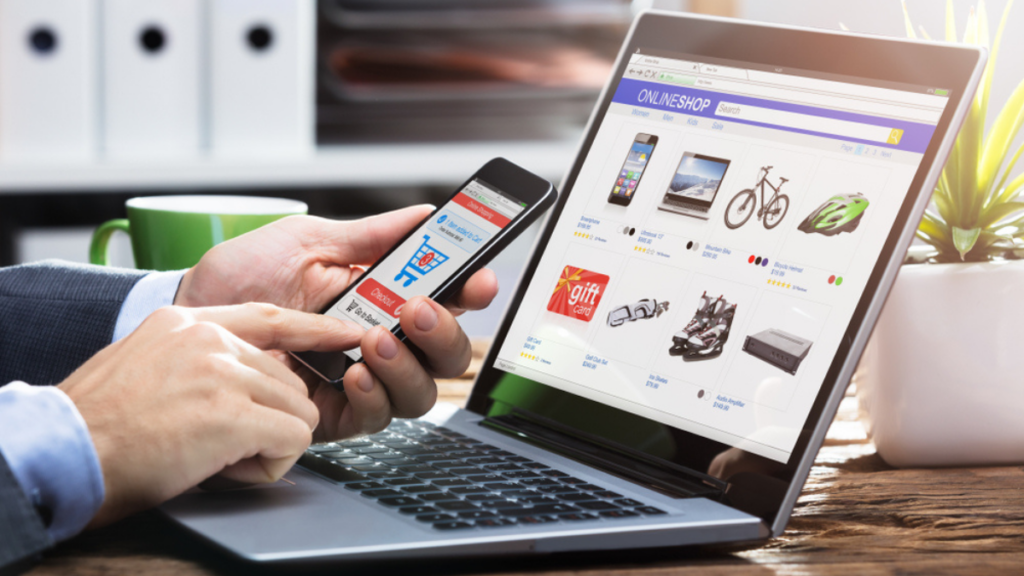By Chris Fletcher, VP of Operations at Visualsoft
Done well, visual commerce should be an experience. Whilst we’re a nation that loves to shop online and offline, there can be a friction when it comes to online shopping and building an emotional connection with a product that can come from touching it and trying it in store.
Context leads to confidence
Good visual commerce can bring the in-store experience online by portraying the product in use, in situ and most importantly in context, allowing the customer to visualise their future enjoyment of the product. At its core visual commerce is about how brands present, and ultimately enhance, the appeal of their products through imagery, videos, and animation, utilising interactive techniques and tools such as augmented reality, AI and CGI. We are increasingly seeing that high-impact opening videos, modular configurations, 360 product views, augmented reality and personal shopping experiences are becoming must-haves for retailers who want to stand out from the crowd.
Giving customers confidence is key, and that’s exactly what visual commerce is there to do. Great visual commerce creates an immersive, enjoyable and personalised experience, driving repeat purchases and building loyalty. Studies show that the majority of buying decisions are made when the consumers’ unconscious brain is processing visual imagery relating to the product, good imagery and positive product association can significantly increase the propensity to purchase, driving up conversion from your hard-earned traffic.
Thinking beyond the payment page
Retailers need to think beyond the payment page; it’s not just about securing the sale but also about retaining it. When we nail the product choice at the point of purchase, it delights the customer and significantly diminishes the chances of a return.
Utilising strong design and engaging content negates the need to ask the customer to ‘picture this…’ and instead presents products in context, in a more useful and interactive way. All of these factors enhance the overall user journey and brand experience, helping increase conversion rates. In the home and garden sector, Visualsoft have worked with Sofas by Saxon to create a sofa builder, and Leader Floors to implement a room visualiser on their site. In the fashion sector, A Hume offers a personal shopper on their Visualsoft site. The most powerful thing about these offerings is that they recreate the offline experience online, providing an immersive and emotional connection that convinces a customer that what they’re buying is the right thing, encourages repeat purchases and builds loyalty.
Strong visual commerce not only communicates what a product is but how it works in the context of the consumers’ life and helps build confidence ahead of a purchase. When customers interact with a visualiser tool it indicates a higher level of intent to purchase, and if executed correctly has a positive impact on conversion rate. In fact, for one homeware retailer Visualsoft worked with, conversion rates increased from 1.97% to 6.93% when customers had utilised a tool that allowed them to upload photos of their own home and place furniture within it.
Be unique
From a website design perspective, Visualsoft has seen an increasing demand for video over the last 12 months. Recent technical developments mean that video content can now be added to websites with little or no impact on overall page speed and this has has allowed us to incorporate video at key touch points throughout the user journey to maximum effect. As a result retailers and website designers are moving away from a templated trend to more unique shop fronts that look special and are clearly differentiated and much more engaging for the user.
As well as video, lifestyle images are also increasing in popularity and can offer a different lens on products that could appear generic to the consumer. With lifestyle imagery and video, brands can create a competitive advantage letting the visuals do the talking to draw in curious buyers.
To create a memorable shopping experience that drives conversions, retailers must ensure their site tells a ‘visual story’ with high-quality images, relevant keywords, engaging videos, and clear and concise descriptions that speak to their target market – and showcase what makes them so unique.
Refine and fine tune
Brilliant visual commerce isn’t just about a one-time design of a beautiful website – it’s about constantly refining and tuning the online store to maximise its potential. It’s essential to look at the data, and see what’s working – and that data points to the growing importance of design and content in influencing online conversion rates. When focusing on digital optimisation it is key to analyse the conversion points, traffic numbers, clicks and more to ensure that we’re seeing a full picture.
Visualsoft gathers as much customer feedback as possible which shows that being unable to see what a product really looks like in use is highly likely to prevent a purchase decision. In the fashion sector for example this issue would be remedied by showing the item on a person, rather than stock product images. In our testing almost 70% of surveyed users preferred to see the item of clothing being worn by a person. That said, product photography can be costly, so before rushing to update product images, consider A/B testing different photo styles to see which your users prefer – this could even be done at category level to keep costs down, until you know if it’s worth the investment.
The future of visual commerce
Looking ahead to 2024 there are some key developments that will be influential, not least of which is AI. There is also a growing demand for customers to be able to upload photos of themselves or their home in order to see a product as it would be worn or featured. This highly personalised experience allows them to put the item they’re considering into the context of their own lives. Once the product is visualised , the consumer is halfway to making that visualisation a reality through a purchase decision. This customised approach can also lead to ‘viral’ outcomes , as customers are more likely to share images of them virtually ‘wearing’ a dress with their friends for example.
To capitalise on this growth opportunity, businesses need to be asking themselves what will make a customer confident that this purchase is the right one for them, and make use of emerging technology to deliver tailored experience. Brands should leverage digitally optimised visual stimulus to allow buyers to see that product in the context of their own lives – and take the next steps to making it a reality. Context, confidence, conversion.









